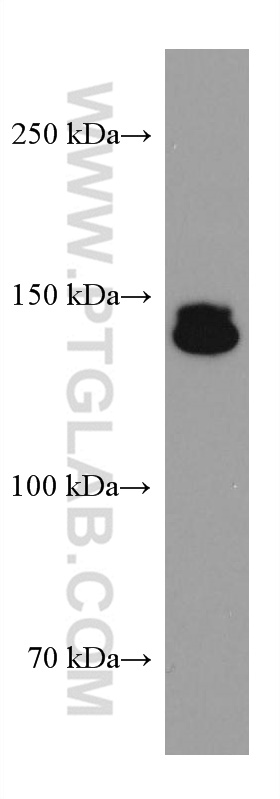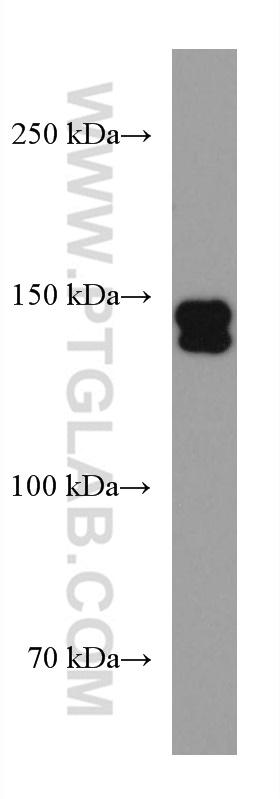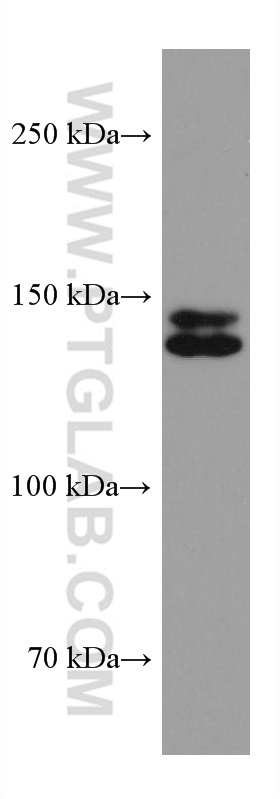验证数据展示
经过测试的应用
| Positive WB detected in | HEK-293 cells, K-562 cells, LNCaP cells |
推荐稀释比
| 应用 | 推荐稀释比 |
|---|---|
| Western Blot (WB) | WB : 1:1000-1:6000 |
| It is recommended that this reagent should be titrated in each testing system to obtain optimal results. | |
| Sample-dependent, Check data in validation data gallery. | |
产品信息
67588-1-Ig targets UBAP2L in WB, ELISA applications and shows reactivity with human samples.
| 经测试应用 | WB, ELISA Application Description |
| 经测试反应性 | human |
| 免疫原 | UBAP2L fusion protein Ag30125 种属同源性预测 |
| 宿主/亚型 | Mouse / IgG2b |
| 抗体类别 | Monoclonal |
| 产品类型 | Antibody |
| 全称 | ubiquitin associated protein 2-like |
| 别名 | 1E3D1, KIAA0144, NICE 4, NICE4, Protein NICE 4 |
| 计算分子量 | 115 kDa |
| 观测分子量 | 140-160 kDa |
| GenBank蛋白编号 | BC003170 |
| 基因名称 | UBAP2L |
| Gene ID (NCBI) | 9898 |
| 偶联类型 | Unconjugated |
| 形式 | Liquid |
| 纯化方式 | Protein A purification |
| UNIPROT ID | Q14157 |
| 储存缓冲液 | PBS with 0.02% sodium azide and 50% glycerol, pH 7.3. |
| 储存条件 | Store at -20°C. Stable for one year after shipment. Aliquoting is unnecessary for -20oC storage. |
背景介绍
Ubiquitin-associated protein 2-like (UBAP2L) is a highly conserved protein with an N-terminal ubiquitin-associated (UBA) domain involved in the ubiquitin-proteasome system and aggregate formation induced by proteasome inhibitors. It was originally identified as a human sperm protein that interacts with zona pellucida 3 in human eggs. It can interact with BIM1 to form a complex that modulates hematopoietic stem cell activity. Recent studies have confirmed that UBAP2L function as an oncogene and is associated with various types of cancer, including prostate cancer, glioma, hepatocellular carcinoma (HCC), and colorectal carcinoma. (PMID: 31114027, PMID: 29196913)
实验方案
| Product Specific Protocols | |
|---|---|
| WB protocol for UBAP2L antibody 67588-1-Ig | Download protocol |
| Standard Protocols | |
|---|---|
| Click here to view our Standard Protocols |


